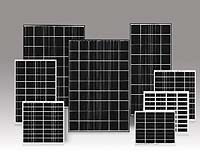 |
London, UK (SPX) Mar 16, 2011 A revolutionary type of personal power pack now in development could help our troops when they are engaged on the battlefield. With the aim of being up to fifty per cent lighter than conventional chemical battery packs used by British infantry, the solar and thermoelectric-powered system could make an important contribution to future military operations. The project is being developed by the University of Glasgow with Loughborough, Strathclyde, Leeds, Reading and Brunel Universities, with funding from the Engineering and Physical Sciences Research Council (EPSRC). It is also supported by the Defence Science and Technology Laboratory (Dstl). The system's innovative combination of solar photovoltaic (PV) cells*, thermoelectric devices** and leading-edge energy storage technology will provide a reliable power supply round-the-clock, just like a normal battery pack. The team is also investigating ways of managing, storing and utilising heat produced by the system. Because it is much lighter, the system will improve soldiers' mobility. Moreover, by eliminating the need to return to base regularly to recharge batteries, it will increase the potential range and duration of infantry operations. It will also absorb energy across the electromagnetic spectrum, making infantry less liable to detection by night vision equipment that uses infra-red technology, for instance. Minister for Universities and Science David Willetts said: "The armed forces often need to carry around a huge amount of kit and the means to power it. It's great that specialists from a range of science disciplines are coming together to develop lighter, more reliable technology that will help to make life easier for them in the field." Although substantial research into solar power for soldiers has already been conducted worldwide, this new UK project differs in its use of thermoelectric devices to complement solar cells, delivering genuine 24/7 power generation capability. The project team is also investigating how both types of device could actually be woven into soldiers' battle dress, which has never been done before***. During the day, the solar cells will produce electricity to power equipment. During the night, the thermoelectric devices will take over and perform the same function. The system will also incorporate advanced energy storage devices to ensure electricity is always available on a continuous basis. "Infantry need electricity for weapons, radios, global positioning systems and many other vital pieces of equipment," says Professor Duncan Gregory of the University of Glasgow. "Batteries can account for over ten per cent of the 45-70kg of equipment that infantry currently carry. By aiding efficiency and comfort, the new system could play a valuable role in ensuring the effectiveness of army operations." PV cells, thermoelectric devices and advanced energy storage devices are already widely used in a range of applications. A key aim of the project team, however, is to produce robust, hard-wearing designs specifically for military use in tough, hostile conditions. Because it will harness clean, free energy sources, the new power system will also offer significant environmental advantages compared with the conventional battery packs currently used by the British army. To tackle the many challenges that the project presents, the team includes specialists from a wide range of disciplines including chemistry, materials science, process engineering, electrical engineering and design. Feedback from serving soldiers will also play a crucial role in optimising the power system for front-line use. "We aim to produce a prototype system within two years," says Professor Gregory. "We also anticipate that the technology that we develop could be adapted for other and very varied uses. One possibility is in niche space applications for powering satellites, another could be to provide means to transport medicines or supplies at cool temperatures in disaster areas or to supply fresh food in difficult economic or climatic conditions".
Share This Article With Planet Earth
Related Links Engineering and Physical Sciences Research Council All About Solar Energy at SolarDaily.com
 KYOCERA Supplies Solar Modules For US Marines' Largest PV Installation
KYOCERA Supplies Solar Modules For US Marines' Largest PV InstallationScottsdale AZ (SPX) Mar 15, 2011 Kyocera Solar and the Naval Facilities Engineering Command (NAVFAC) Southwest have announced the completion of a 1.4 megawatt (MW) solar electric system on the United States Marine Corps Base Camp Pendleton, just north of San Diego, Calif. NAVFAC Southwest celebrated the completion of the project with a ribbon-cutting ceremony, held on February 3. Composed of 6,300 KD235 modules produced l ... read more |
|
| The content herein, unless otherwise known to be public domain, are Copyright 1995-2010 - SpaceDaily. AFP and UPI Wire Stories are copyright Agence France-Presse and United Press International. ESA Portal Reports are copyright European Space Agency. All NASA sourced material is public domain. Additional copyrights may apply in whole or part to other bona fide parties. Advertising does not imply endorsement,agreement or approval of any opinions, statements or information provided by SpaceDaily on any Web page published or hosted by SpaceDaily. Privacy Statement |